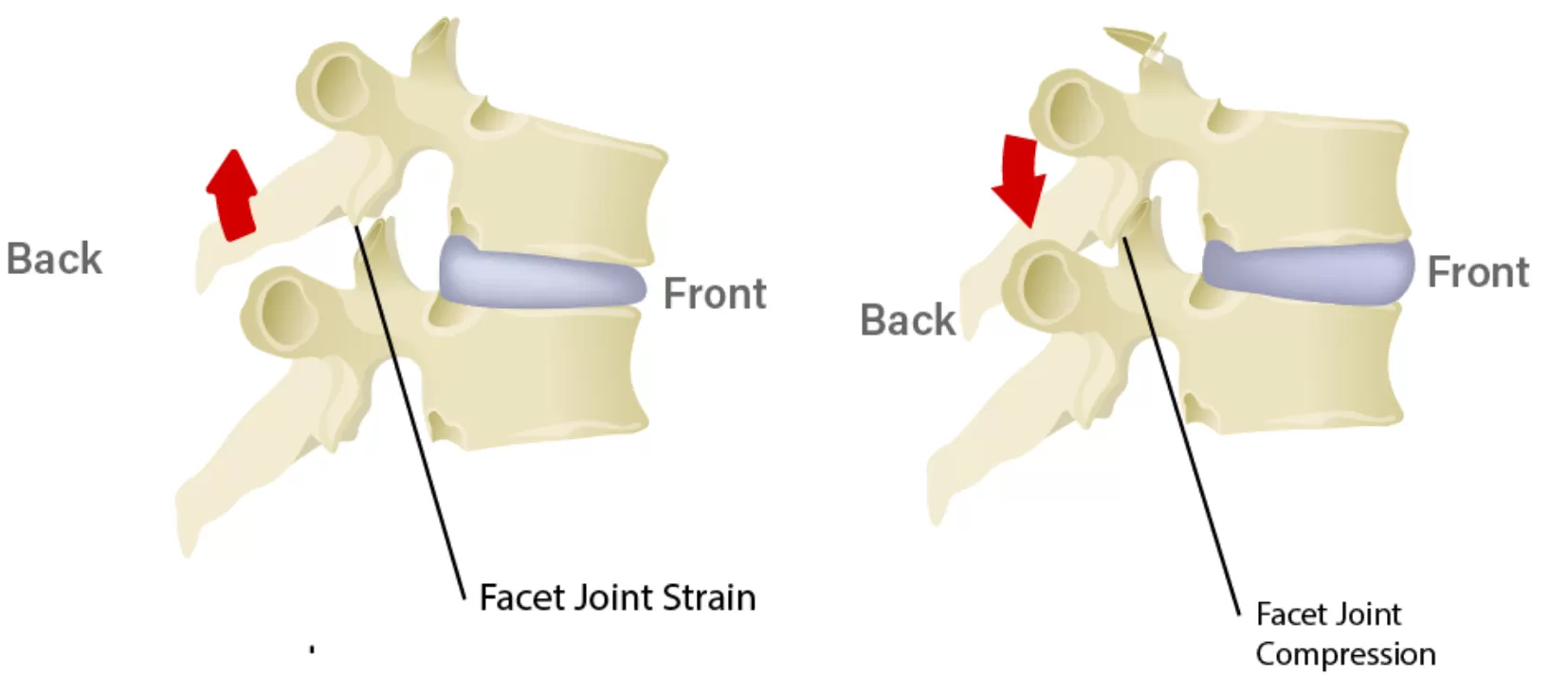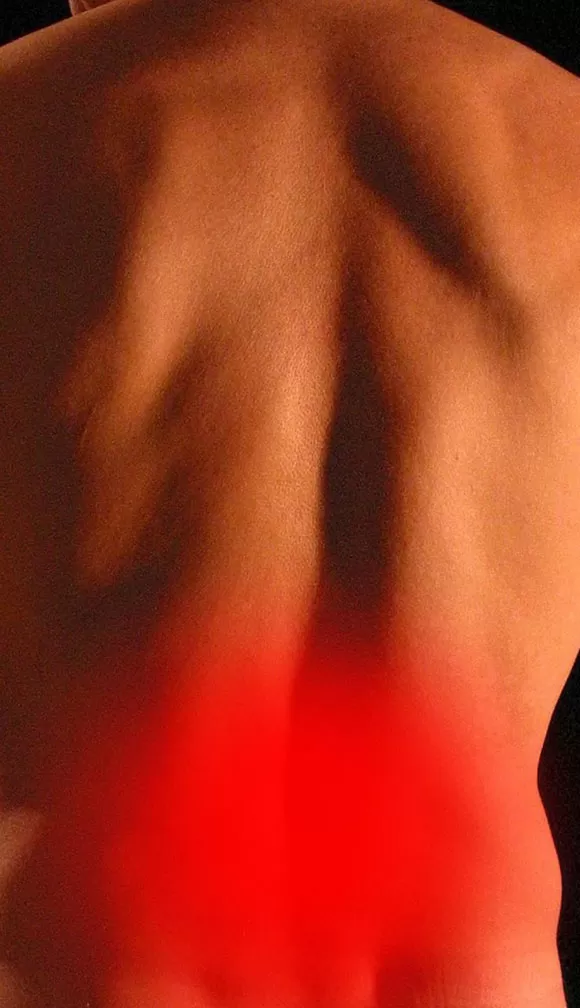What Is Facet Joint Pain (The Most Common Type Of Back Pain) & How Can You Treat Facet Joint Cysts That Cause Sciatica

Facet joint pain, also known as facet syndrome or facet joint syndrome, is a significant and often under-recognized source of back pain.
Before we delve into the specifics of facet joint pain, it’s crucial to understand the anatomy of the spine. The human spine is a complex structure composed of vertebrae, intervertebral discs, and the facet joints. These joints are small but critical components of the spinal column that allow for flexibility and movement. They are located at each segment of the spine and provide stability, helping to manage the motion of bending and twisting.
How Does Facet Pain Happen?
Facet joint pain arises when there is inflammation, arthritic changes, or mechanical stress to these joints. The character of sensation felt by a typical sufferer can vary but is often described as a deep, aching pain that can be sharp during certain movements.

It’s usually localized to the area of the affected joint but can radiate to other areas. For example, if the lower back's facet joints are affected, the pain can radiate into the buttocks and upper thigh region. In contrast, if the cervical (neck) facet joints are affected, the pain may radiate to the shoulders and can cause headaches. The pain is typically exacerbated by actions that cause the joints to compress such as bending backward or twisting sideways.
What Causes Facet Pain/ Facet Syndrome?
One of the most common causes of facet joint pain is degenerative changes due to aging. As we age, the intervertebral discs lose hydration and height, which in turn can lead to increased mechanical stress on the facet joints. This stress can cause degeneration and arthritis in the facet joints themselves. Injuries, repetitive movements, and poor posture can also contribute to the development of facet joint syndrome.
Diagnosis of facet joint pain can be complex. While physical examination and history are crucial, imaging techniques, particularly magnetic resonance imaging (MRI), can be invaluable in confirming a diagnosis. MRI systems, particularly high-strength 3T (Tesla) and partially 4T units, provide detailed images of the spinal anatomy. These imaging systems are quite adept at visualizing soft tissue structures and can detect abnormalities such as facet joint cysts.


Facet cysts are fluid-filled sacs that arise from the facet joints due to degeneration and can lead to spinal stenosis (narrowing of the spinal canal) or foraminal stenosis (narrowing of the openings where nerve roots exit the spine). When these cysts compress nerve roots, they can cause symptoms similar to sciatica, including pain, numbness, and weakness in the legs – a condition often referred to as transient sciatic. Transient sciatic symptoms occur because the cysts can change in size or burst, leading to temporary changes in the degree of nerve compression.
High-definition MRI scans are especially sensitive in detecting these cysts, which may not be visible on lower-strength MRI machines or other imaging modalities. The clarity of the images from 3T and 4T MRI systems also allows for better surgical planning if intervention is necessary. It is worth noting that while higher strength MRIs like the 4T are not as commonly used clinically due to challenges like increased scan time and higher costs, they do offer superior image resolution which can be beneficial in complex cases.
Management of facet joint pain typically includes conservative measures such as physical therapy, anti-inflammatory medications, and possibly spinal injections. In cases where conservative treatments do not provide sufficient relief and imaging confirms the presence of facet cysts or significant degeneration, surgical options may be considered.
Understanding facet joint pain as a significant cause of back pain is essential in both diagnosis and treatment. With advances in medical imaging, such as high-field MRI, clinicians can diagnose and treat this condition with greater precision, offering hope for those suffering from this debilitating pain.
How Can Chiropractic Help My Facet Pain?
Chiropractic manipulation, also known as chiropractic adjustment or spinal manipulation, is a common therapeutic treatment for lower back pain, including that caused by facet joint issues. The fundamental theory behind chiropractic care is that proper alignment of the body's musculoskeletal structure, particularly the spine, will enable the body to heal itself without surgery or medication. Manipulation is used to restore mobility to joints restricted by tissue injury caused by a traumatic event, such as falling, or by repetitive stress, such as sitting without proper back support.
Chiropractic manipulation involves a high-velocity, short-lever arm thrust applied to abnormal vertebra with the goal of improving functionality, reducing nerve irritability, and restoring range of motion in the back. It is often accompanied by a popping noise that is thought to be caused by the release of gas bubbles from joint fluid—a process known as cavitation.
A systematic review of studies by Cassidy, et al., published in the "Spine" journal (February 15, 2008) found evidence that spinal manipulative therapy (SMT) is a safe and effective treatment option for many individuals with low-back pain, including facet joint pain. Chiropractic care is often compared with other forms of treatment options for the lower back pain, such as physical therapy or medication.
In the realm of facet joint pain, chiropractic manipulation is believed to provide relief by:
- Restoring normal movement to the joint: Chiropractic adjustments can help to realign joints and increase the range of motion that may have been lost due to facet joint degeneration or other back conditions.
- Reducing pain: The manipulation can provide relief from facet joint pain by alleviating pressure on joints and muscles, and by promoting the release of pain-inhibiting hormones such as endorphins.
- Decreasing muscle tension: Chiropractic techniques may help relax muscles that have become tight and sore due to compensatory reactions to joint pain.
- Improving function: By restoring normal joint mechanics and reducing pain, chiropractic care can help improve overall spinal function.
Studies such as the one conducted by Haas, et al., published in the "Journal of Manipulative and Physiological Therapeutics" (May 2003), suggest that spinal manipulation, as performed by chiropractors, can be as effective for treating low back pain as other treatments like medication and physical therapy. However, it is essential to note that chiropractic care may not be suitable for all causes of back pain, and it is not a one-size-fits-all remedy.
It's worth mentioning that while many patients report relief from pain following chiropractic treatment, the mechanisms by which this relief is achieved are not entirely understood and are subject to ongoing research and debate. There is also variability in patient response to chiropractic care, with some experiencing significant improvement and others experiencing less benefit.
Patients considering chiropractic manipulation for facet joint pain should consult with a healthcare provider to determine if this treatment is appropriate for their specific condition, especially since spinal manipulation is contraindicated in certain cases, such as in individuals with severe osteoporosis, spinal cancer, increased risk of stroke, or instability in the spine.
Furthermore, as with any medical treatment, it is vital to seek care from licensed and trained professionals who can assess the patient’s individual needs and provide the most appropriate care. A thorough examination, possibly including diagnostic imaging like MRI, can help ensure that chiropractic care is safe and recommended for the individual's particular spinal issue.
